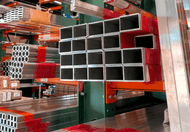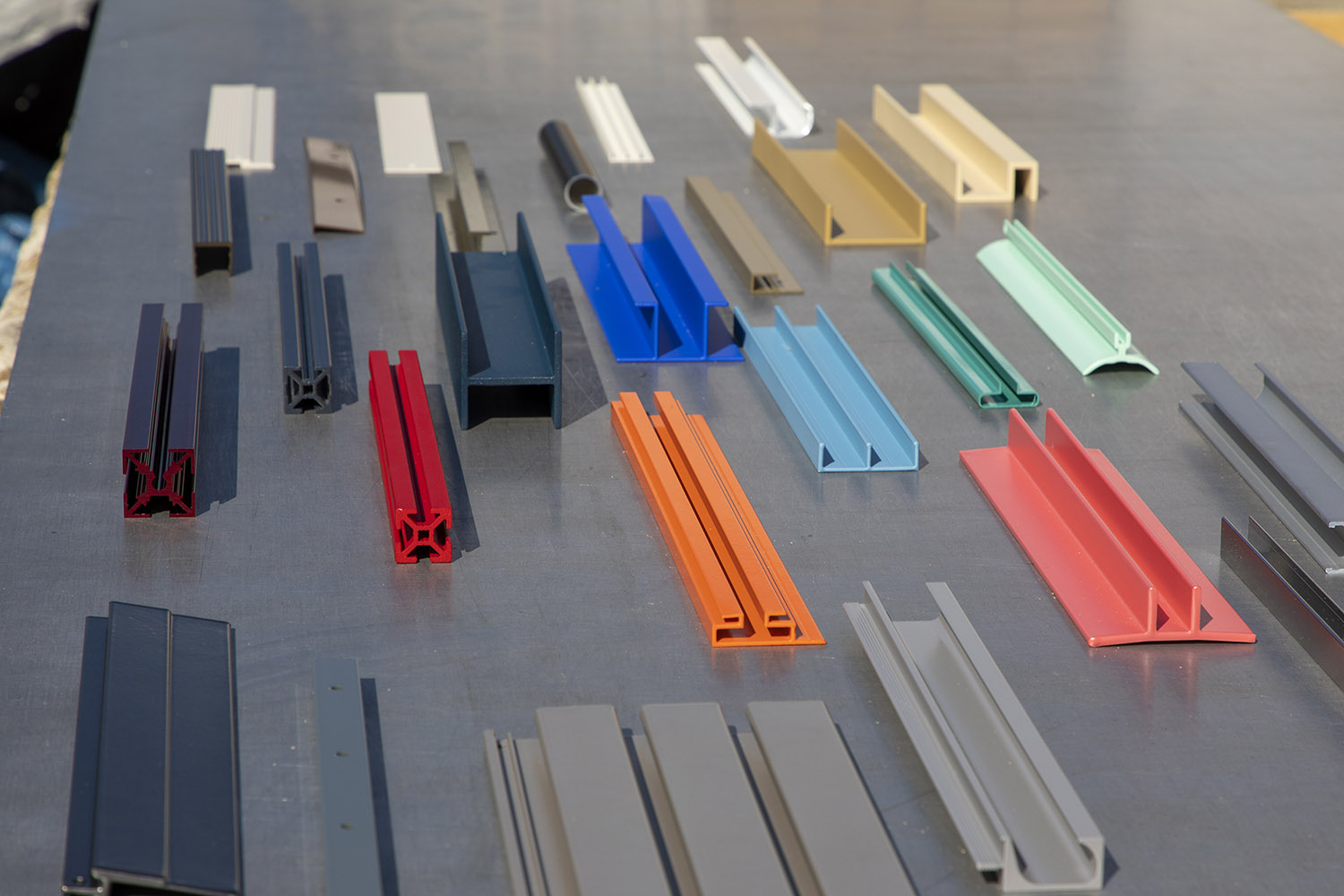Square Tubing vs Round Tubing: Differences & Applications

Aside from appearance, you may not think there are many differences when comparing square tubing vs. round tubing (particularly when it comes to extruded aluminum tubing). Both are commonly used in construction and manufacturing, but the structural properties that each shape provides generally make them suited for different applications.
In this quick breakdown, we’ll outline the differences to help you choose the right shape for your next project.
Square Tubing vs. Round Tubing
With the right extrusion die, it’s possible to shape aluminum into nearly any profile. Still, square and round tubing remain two of the most common shapes for their broad utilities.
To that end, square and round tubing can be produced by appropriately bending a flat piece of aluminum into shape and welding it. Additionally, manufacturers can use a tool called a “mandrel” to maintain the hollow center as the aluminum is extruded around it.
Round tubing will generally offer greater structural benefits when comparing them without considering your use case. However, square tubing is often the ideal choice when:
- Cutting
- Affixing hardware to the tube
- Fitting the piece(s) into tight spaces
- Welding
- Decorative purposes
When purchasing aluminum tubing, remember that the sizes are measurements of the outside diameter (OD) and wall thickness. Pipes, on the other hand, are measured by their inside diameter (ID).
Strength and Durability
Round tubing offers greater strength and durability because of how the cylindrical shape distributes both characteristics.
Square Tube Strength
The 90° right angles of square tubing affect its strength and ability to withstand stress because they unevenly distribute them throughout the material, with torsional twisting being a greater concern. When under pressure, square tubing will lose some of its strength and durability.
Round Tube Strength
With the cylindrical shape, all pressure is distributed evenly through round aluminum tubing. This makes it incredibly strong and durable—more so than square tubing when comparing the same weight, especially since round tubing is roughly 20% lighter when comparing equivalent lengths.
Cutting and Shaping
Square tubing is far easier to cut, while round tubing generally responds better to bending and other shaping.
However, their distinct malleabilities and ease of shaping partially depend on factors such as wall thickness and overall sizing.
For example, the greater the OD and the thinner the wall, the more likely tubing—round or square—is to distort under compressive and tensile forces during shaping.
Being hollow, tubing always risks ripping, rippling or buckling if too much force is applied during shaping. This phenomenon is exacerbated for square tubing.
Square Tube Malleability
Because of the flat surfaces, it’s significantly easier to cut square tubing with whatever tool necessary—from a powered cutter to a handheld hacksaw. The flat surfaces also generally make it easier to position the tubing in a vice—or tools adjacent—to hold it in place while you work.
But the flat surfaces and unevenly distributed pressure don’t help with shaping, as the material—particularly the two walls parallel to the bend—will be subjected to higher amounts of tension and compression.
Round Tube Malleability
With evenly distributed pressure and no corners, round tubing is superior when it comes to bending and shaping. The aluminum will bend and flow more consistently and smoothly throughout the shaping process, minimizing distortion and preserving strength afterward.
Weldability
Again, the flat surfaces of square tubing provide a workability advantage, making welding easier along four straight lines. With round tubing, it’s more challenging to follow the circular path, and the continuous weld is inherently longer for similar sizes. Precision begets more complexity with round tubing, especially for difficult-to-reach or more complex welds.
Applications/Use Cases
Square tubing is often used for various projects because the use case demands outweigh the more robust structural properties that round tubing offers. Square tubing is also generally used for structural and aesthetic purposes.
While round tubing may have the same application, it’s sometimes used for carrying fluids and gasses in smaller quantities than would necessitate pipes.
Square Tube Applications
Square tubing may be preferred if your application requires:
- Numerous welds
- Drilling through to attach hardware or other pieces
- Working within tightly confined spaces (e.g., fitting 90° bends into a corner)
- Aesthetics where angle designs or filling more space is preferred
Round Tube Applications
Round tubing may be preferred if your application requires:
- Greater strength, durability and shaping properties
- Lighter weight
- Transferring small amounts of liquid or gas
- Ease for users holding finished products (e.g., broom handles)
Square, Round and All Your Aluminum Needs at Orange Aluminum
The easiest way to remember the difference between square tubing vs. round tubing is that the former generally suits a wide range of applications. In contrast, the latter provides more robust structural properties and better shaping.
And whether you’re looking for square or round aluminum tubing—or other shapes—Orange Aluminum is your choice provider for extruded aluminum. With over 1000 SKUs in stock, we have nearly every shape and size of aluminum material readily available.
We also offer custom extrusion profiles to ensure your project needs are met, whatever they are, and will help you figure out your ideal profile if you need guidance.
Contact us today to talk about your next project.



